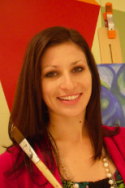 Walt Disney believed that story development was one of the most important parts of producing an animated film. In the 1930s, the Walt Disney Studios developed storyboards as a tool for creating engaging and coherent stories. A storyboard is series of sketches that maps out a story and allows filmmakers to visualize the sequence of the plot. Story sketches are created to depict the key storytelling moments of a film. Storyboards help filmmakers determine the lucidity of a story, and whether there are any significant “plotholes,” or inconsistencies.
Walt Disney believed that story development was one of the most important parts of producing an animated film. In the 1930s, the Walt Disney Studios developed storyboards as a tool for creating engaging and coherent stories. A storyboard is series of sketches that maps out a story and allows filmmakers to visualize the sequence of the plot. Story sketches are created to depict the key storytelling moments of a film. Storyboards help filmmakers determine the lucidity of a story, and whether there are any significant “plotholes,” or inconsistencies.
During Open Studio this month, we created a collective storyboard outlining some of the key plot moments from the story Peter Pan. Each participant chose a prompt describing a particular moment in the story. He or she then created a simple sketch depicting that moment, and added it to the board in the proper sequence.
A storyboard can be made fairly simply at home using easy-to-find materials. In addition to helping outline a story, storyboards can be used to organize ideas for an essay, a website, a theme park attraction, or a video game. Follow the instructions below to create an original storyboard for whatever type of ideas you wish to organize.
You will need:
- Large piece of foam board, poster board, or whiteboard
- Several pieces of blank drawing paper, cut to about half the size of printer paper
- Drawing pencils, colored pencils, pastels, charcoal, or other simple medium
- Tape
Instructions:

- Decide upon the idea, story, or concept your storyboard will depict. It does not have to be particularly long or detailed.
- Think about the most important storytelling moments, concepts, or elements of your story. These should be the moments depicted in your sketches. You do not need to depict every single detail; remember, a storyboard will merely act as a guide or organizational tool.
- Begin creating your sketches and taping them onto your storyboard in the order in which they occur. It is important to use tape rather than glue so that you have the freedom to rearrange your sketches as needed.
- Add notes to your sketches if you intend to add any elements that cannot be depicted graphically, such as dialogue or special effects.
- Once your sketches have been made and placed in order, step back and examine your storyboard. The sketches will help you determine if your story flows well or whether you have forgotten anything

Alyssa Carnahan
Open Studio Coordinator
at The Walt Disney Family Museum
